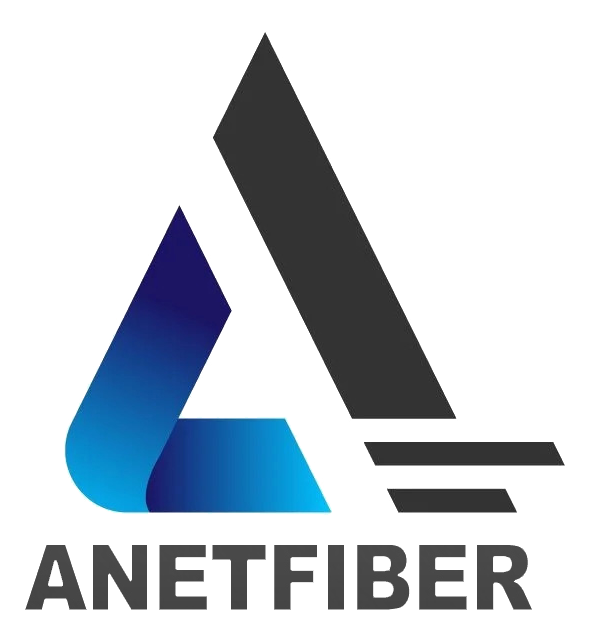Fiber Optics vs. Traditional Networks: Revolutionizing Smart Cities

Introduction to Fiber Optics and Smart Cities
In the ever-evolving landscape of urban development, Fiber Optics and Smart Cities have emerged as pivotal components reshaping the way cities function. Understanding the fundamental concepts of these two elements is crucial in comprehending their profound impact on modern urban environments.
Understanding Fiber Optics
Fiber Optics refers to the transmission of data through thin, flexible fibers made of glass or plastic. These fibers utilize light pulses to carry information over long distances with minimal signal loss. The use of Fiber Optics has revolutionized communication and connectivity, enabling high-speed internet, crystal-clear telecommunication, and efficient data transmission.
The Concept of Smart Cities
The concept of Smart Cities revolves around leveraging technology to enhance the quality of life for residents while optimizing city operations. This involves integrating various digital technologies such as sensors, cameras, and data analytics to improve infrastructure, transportation, energy efficiency, and overall sustainability. By harnessing innovation and connectivity, Smart Cities aim to create more livable, efficient, and responsive urban spaces.
The Rise of Fiber Optic Technology in Urban Development
As urban landscapes continue to evolve, the Rise of Fiber Optic Technology is profoundly influencing the development of Smart Cities. This section delves into a comparative analysis between Fiber Optics and traditional networks, as well as the pivotal role of Fiber Optics in shaping urban planning.
Comparing Fiber Optics and Traditional Networks
Speed and Reliability
One of the most notable distinctions between Fiber Optics and traditional networks lies in their speed and reliability. Fiber Optic cables, with their ability to transmit data using light pulses, offer unparalleled speed, enabling swift communication and data transfer within Smart Cities. In contrast, traditional networks often struggle to match the rapid pace set by Fiber Optics, leading to potential lags and connectivity issues.
Capacity for Future Expansion
Another critical aspect where Fiber Optics outshines traditional networks is its capacity for future expansion. The inherent design of Fiber Optic Technology allows for seamless scalability, accommodating the increasing demands of burgeoning Smart Cities without compromising performance. On the other hand, traditional networks may encounter limitations when attempting to adapt to the evolving needs of urban development.
The Role of Fiber Optics in Urban Planning
Supporting IoT Connectivity
In contemporary urban planning initiatives, the integration of Internet of Things (IoT) devices has become increasingly prevalent. Herein lies a pivotal role for Fiber Optics, serving as the backbone for robust and reliable connectivity among myriad IoT devices dispersed throughout Smart Cities. This foundational support system enables efficient communication and data exchange, fostering a cohesive network within urban environments.
Enhancing Data Analytics
Furthermore, within the realm of urban planning, effective data analytics plays a central role in optimizing various city functions. Leveraging advanced technologies powered by Fiber Optic Networks, cities can gather real-time data on traffic patterns, energy consumption, public services utilization, and more. This wealth of information facilitates informed decision-making processes that contribute to enhancing overall urban functionality.
The integration of cutting-edge technology such as Fiber Optic Networks not only elevates connectivity but also lays a solid foundation for sustainable growth within modern cities.
Key Components of Fiber Optics Enhancing Smart City Infrastructure
In the realm of urban development, Fiber Optics serves as a catalyst for transformative changes, enhancing the very fabric of Smart city infrastructure. This section explores the pivotal components through which Fiber Optics contributes to the evolution and optimization of urban landscapes.
Infrastructure Transformation with Fiber Optics
Upgrading to Smart Grid Networks
The integration of Fiber Optics paves the way for a seamless transition towards advanced Smart grid networks within urban environments. By leveraging high-speed data transmission and low latency offered by Fiber Optic Technology, cities can modernize their energy distribution systems. This upgrade enables real-time monitoring, precise load management, and rapid fault detection, fostering greater energy efficiency and reliability.
Implementing Sustainability Initiatives
An essential facet of Fiber Optic Technology lies in its capacity to underpin diverse sustainability initiatives within smart city infrastructure. Through enhanced connectivity and data transmission capabilities, cities can implement energy conservation measures, optimize waste management processes, and monitor environmental parameters in real time. This proactive approach aligns with the overarching goal of creating environmentally conscious and sustainable urban spaces.
Connectivity Solutions for Urban Development
Boosting IoT Connectivity
The proliferation of Fiber Optics plays a pivotal role in bolstering IoT connectivity across various facets of urban development. With an extensive network supported by high-speed data transmission, cities can seamlessly integrate IoT devices into critical systems such as transportation, public safety, and utilities. This interconnected web of IoT devices enhances operational efficiency while providing valuable insights for informed decision-making.
Facilitating Smart city infrastructure
Moreover, the deployment of robust Fiber Optic Networks facilitates the seamless integration and operation of diverse smart city infrastructure components. From intelligent traffic management systems to adaptive street lighting and automated waste collection mechanisms, this cohesive network underpinned by Fiber Optics forms the backbone of a responsive and interconnected urban ecosystem.
The strategic incorporation of Fiber Optic Technology not only elevates connectivity but also lays a solid foundation for sustainable growth within modern cities.
The Future of Smart Cities with Fiber Optic Networks
As Fiber Optics continue to redefine urban connectivity, the future of Smart Cities is poised to undergo significant transformations, ushering in a new era of sustainable development and data-driven innovation.
Predicting Urban Development Trends
The integration of Fiber Optic Networks is set to exert a profound impact on Urban Planning, shaping the trajectory of future cities in multifaceted ways. By embracing the capabilities offered by Fiber Optics, cities can anticipate a paradigm shift in their approach towards infrastructure development and resource management. The seamless integration of high-speed data transmission and reliable connectivity will enable urban planners to design more agile, responsive, and adaptable urban landscapes. This evolution is poised to revolutionize traditional urban planning methodologies, fostering dynamic environments that cater to the evolving needs of residents and businesses alike.
Moreover, the proliferation of advanced Data Analytics empowered by Fiber Optic Technology will play an instrumental role in shaping future cities. By harnessing real-time data insights derived from interconnected systems, urban planners can gain invaluable perspectives on traffic patterns, energy consumption trends, public service utilization, and environmental parameters. This wealth of information will serve as a cornerstone for informed decision-making processes, enabling cities to optimize resource allocation, enhance operational efficiency, and proactively address emerging challenges.
Sustainability and Smart Cities
In the realm of sustainability initiatives, Fiber Optics stands as a linchpin for driving long-term environmental stewardship within Smart Cities. The seamless integration of advanced connectivity solutions underpinned by robust Fiber Optic Networks empowers cities to implement comprehensive sustainability initiatives with precision and foresight. From optimizing energy consumption through smart grid networks to monitoring environmental parameters in real time, the convergence of Fiber Optics and sustainability initiatives paves the way for creating environmentally conscious urban ecosystems.
Furthermore, the evolution of Smart Grid Networks, facilitated by the unparalleled capabilities of Fiber Optics, represents a pivotal stride towards sustainable urban development. These next-generation grid networks enable precise load management, rapid fault detection, and real-time monitoring of energy distribution systems. As cities embrace these advancements, they are poised to achieve greater energy efficiency while minimizing their ecological footprint.
Conclusion: Reflecting on the Shift Towards Fiber Optics
The transformative impact of Fiber Optics on Smart Cities is undeniable, heralding a new era of connectivity and urban development. By seamlessly integrating high-speed data transmission and robust connectivity solutions, Fiber Optics has redefined the very fabric of modern cities, paving the way for enhanced efficiency, sustainability, and innovation.
The proliferation of Fiber Optic Networks has catalyzed a paradigm shift in urban connectivity, empowering cities to embrace a future characterized by agile infrastructure, data-driven decision-making, and interconnected ecosystems. As Fiber Optics continue to permeate the urban landscape, the trajectory of Smart Cities is poised for continued evolution and advancement.
Looking ahead, the continued rise of Smart Cities is inexorably intertwined with the pervasive influence of Fiber Optics. This symbiotic relationship between advanced connectivity solutions and urban development signifies a future where cities are not merely connected but are intelligently interwoven with technology to enhance livability, sustainability, and resilience.
As cities navigate towards an increasingly digitalized future, the role of Fiber Optics as a cornerstone for urban transformation cannot be overstated. The seamless integration of this cutting-edge technology sets the stage for a dynamic urban landscape where innovation thrives and residents experience an unprecedented level of interconnectedness.
In essence, the shift towards embracing Fiber Optics represents a pivotal juncture in urban evolution—a juncture marked by boundless opportunities for cities to harness technology in fostering vibrant communities and sustainable growth.


